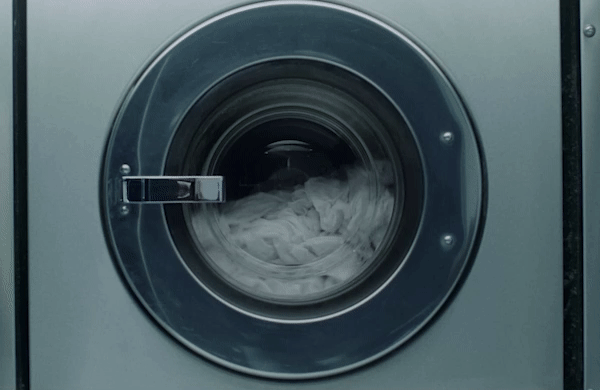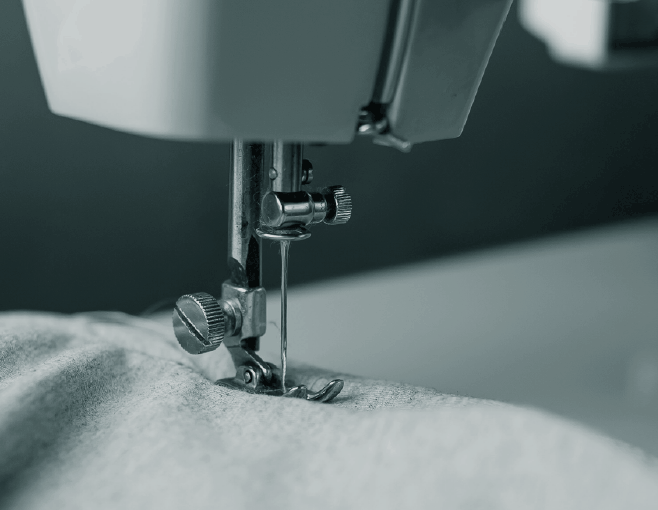The difference between a highquality T-shirt and a low-quality T-shirt is significant when it comes to production, environmental impact, social responsibility, and product lifetime.
If you choose a high-quality T-shirt, you help reduce the environmental impact as it lasts longer, so you don’t have to buy as many T-shirts.
This helps reduce the total production count and thus the environmental impact associated with the production of T-shirts.
For four decades, we have e.g. created quality T-shirts that can be worn again and again. We believe that this is the best way to limit our impact on the environment.
"The most responsible
T-shirt is the one that
can be used over and
over again"
Three tips for choosing the right T-shirt
1. Is the T-shirt made of durable materials?
Choosing good, durable high-quality materials is paramount to the quality of the product. All materials are carefully selected with a focus on quality, durability, and functionality. The materials and their inherent functionalities are the foundation of our products. They’re tested rigorously and come from suppliers with whom we have long-term business relationships.
Our high standards for materials also occasionally means that some materials will be rejected if we at ID® cannot vouch for their quality. For instance, we have rejected the use of recycled cotton in the products, as recycled cotton does not prolong the product's lifespan. On the contrary, recycled cotton lowers the quality of the product, as the cotton fibres are torn up and thus become shorter. Shorter cotton fibres equal poorer cotton and ultimately result in a lower product quality.
Therefore, we use GOTS-certified organic cotton instead, which complies with the strict requirements of OEKO-TEX®, annex 6, product class 1 and offers EU-Ecolabel certified products. In addition, we are a proud member of the Better Cotton Initiative, which works towards making global cotton production better for the people who produce it and better for the environment in which it is grown.
2. Is the T-shirt produced under high quality standards?
When we start a long-term collaboration with a new supplier, it is important to align expectations with the future collaboration, including future expectations for production. All new suppliers receive our quality manual and Code of Conduct. As part of the collaboration with ID®, they must sign the quality manual.
We carry out ongoing product tests in our Quality Lab, where we ensure that the product has the right colour consistency, that the material has the right grammage, and that the measurements correspond with our measurement chart. In addition, regular textile washing tests are carried out either in the quality room or at external industrial laundries, where the shrinkage, colour, and general quality of the clothes are tested at different washing temperatures.
3. Does the T-shirt have a good fit and comfort?
“A good design and a snug fit are both paramount so that employees can feel comfortable and perform at their best.” To ensure a snug fit, our designer works continuously with how the clothes should be cut and sewn together so that they are comfortable and have the right look. Even the smallest details can have a large impact on whether the final design ends up exactly as it should.
The clothes are continuously tested on our in-house models, and we always make sure that the clothes comply with our standards for a snug fit and the measurements in the measurement chart.
Life cycle stage | Usage
JOIN US IN MAKING A DIFFERENCE
Did you know that the best way to reduce your environmental impact is to take good care of your T-shirt and use it for as long as possible? Because if you buy a good quality T-shirt, it will last longer - especially if you wash it with care and repair it before you replace it.
Wash with care
With the right washing and drying, you can help make a difference to the environment. We have collected 14 good washing tips that will help you save resources, preserve the fit of the T-shirt and extend its life.

Repair the clothes
In order for the T-shirt to have the least possible impact on the environment, it must be used for as long as possible. If the accident is over, - always consider whether the T-shirt can be repaired before replacing it.

Report on CSR, cf. Section 99 a" of the Danish Financial Statements Act.  ID® Responsibility report 2024/2025. View here
ID® Responsibility report 2024/2025. View here




